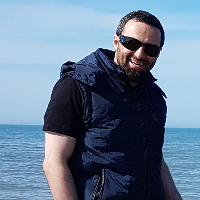Investigation of Clay Contents Using Lab Diffuse Reflectance Spectroscopy (Lab Hyperspectroscopy)
Abstract:
Satellite image fusion and creating data with spectral and spatial capabilities greater than those of the existing data is of special interest and position in Remote Sensing. However, the accuracy and efficiency of all processing stages of using these data depend on the precision and reliability of the produced data. The optimum utilization of fused images relies, ultimately, on the precision of the employed fusion method. Evaluation of this important aspect requires selection of an optimum assessment metric which is appropriate for the objectives and application areas of fused images. Different application areas such as, natural resources, civil areas and etc. have different preferences with regard to maintaining the spectral and spatial data. Therefore, selection of the best fusion method, that is appropriate for the application area of the image, through image quality assessment metrics is one of the users challenges in this field. The present paper, thus, attempts to provide an analysis and assessment of 20 common image quality assessment methods so as to identify and introduce the most optimum metrics based on the area of application of fused images. It also tries to introduce the factors causing differences in the way quality is assessed by the metrics. And then present a model for identifying the capabilities of each metric for displaying the distortions that occur in the spectral and spatial aspects of data. To this end, two metrics of high-pass filter and spectral angle mapper are taken into consideration as spectral and spatial data comparison bases, and the performance of metrics with regard to their assessment of the quality of simulated data, that contain images with controlled spectral and spatial distortions, is evaluated. Spectral distortions were introduced by high-pass filter effect, band displacement and changing color tone. Low-pass filter and attrition filters with structural elements of different dimensions were also used for introducing spatial distortions. Due to offering different spectral and spatial resolutions, images from Landsat8, EO-1, and Angular Mapper method that are suitable for assessment of images with sensitive applications as they display the spectral distortions with greater precision; These methods include BIAS, RASE, Q, MSSIM, NQM, FSIM, SRSIM, and SAM indices. The third group is also compatible with high-pass filter of HPF, RFSIM and MAD that are of a greater capability for displaying spatial distortions.
Keywords:
Language:
Persian
Published:
Iranian Journal of Remote Sencing & GIS, Volume:8 Issue: 1, 2016
Pages:
71 to 94
https://www.magiran.com/p1735722
سامانه نویسندگان
مقالات دیگری از این نویسنده (گان)
-
Applicability of Proximal Sensing Technology in the study of Silt in the soils of Mazandaran Province
*, Hosseinali Bahrami, Sayed Mostafa Emadi
Journal of Watershed Management Research, -
Prediction of soil textural constituents using reflected spectra in eastern Mazandaran Province
Nastaran Shiati, Seyed Mostafa Emadi, *, Mohammadali Bahmanyar
Journal of Dry land Soil Research, Summer 2024


